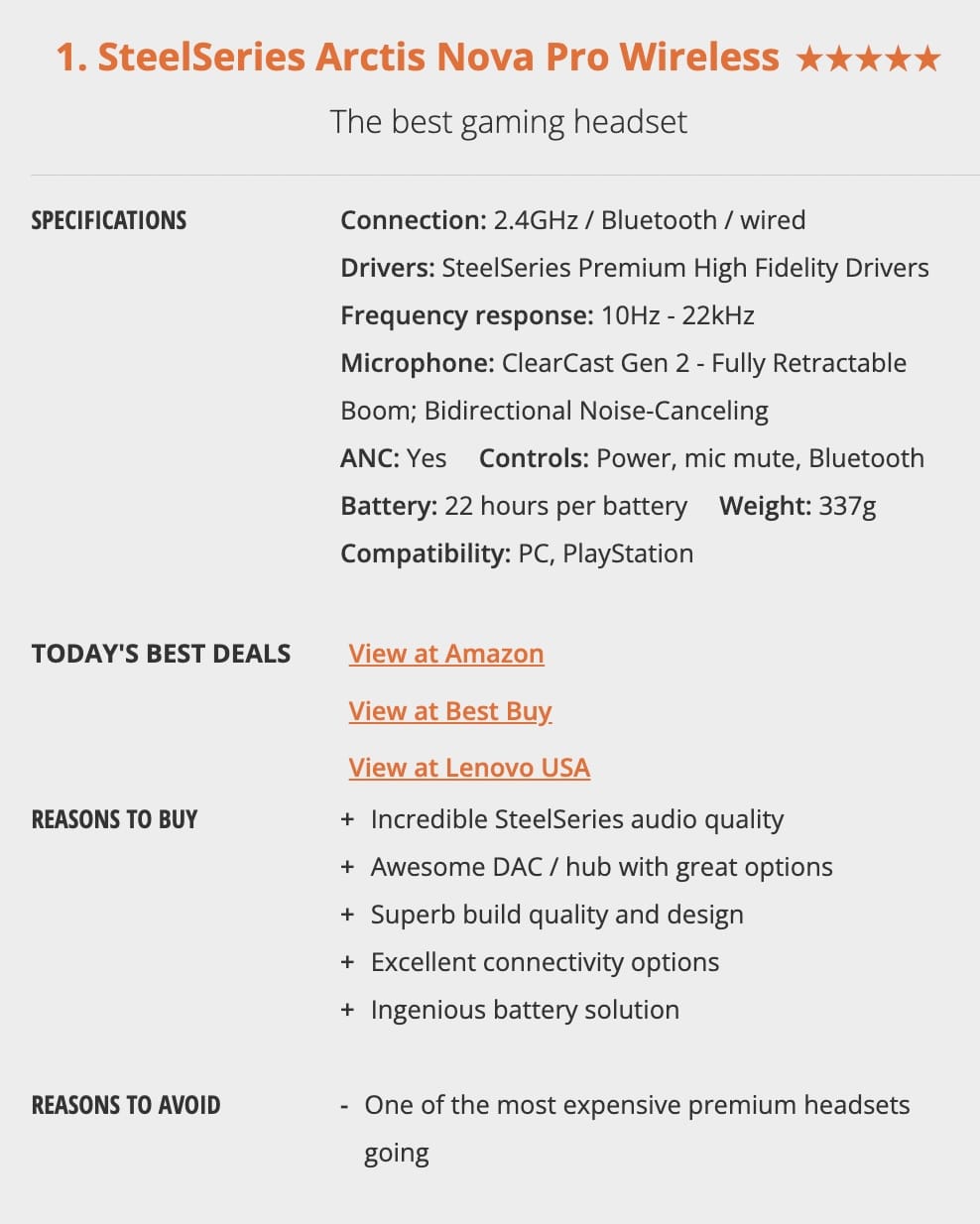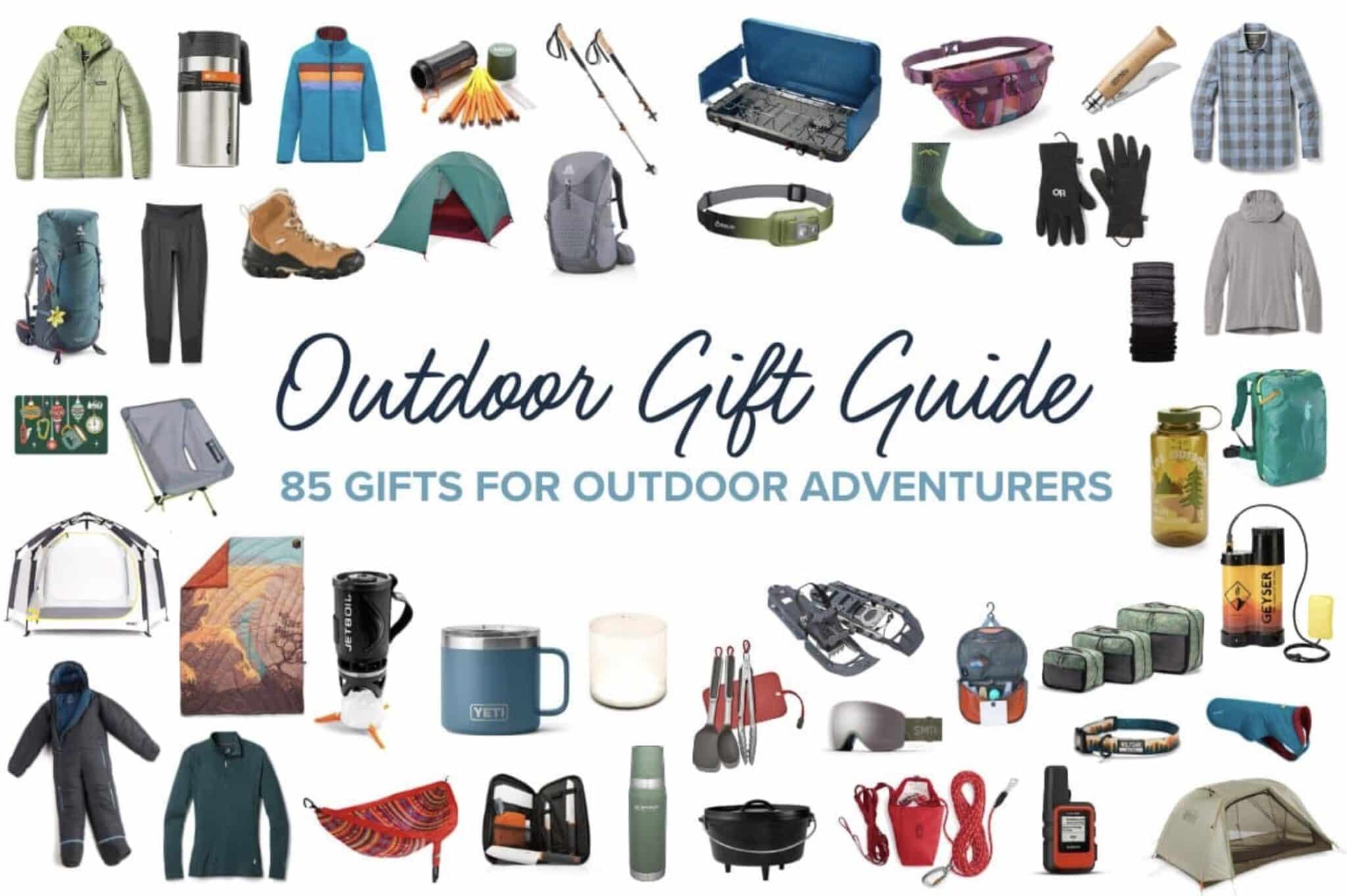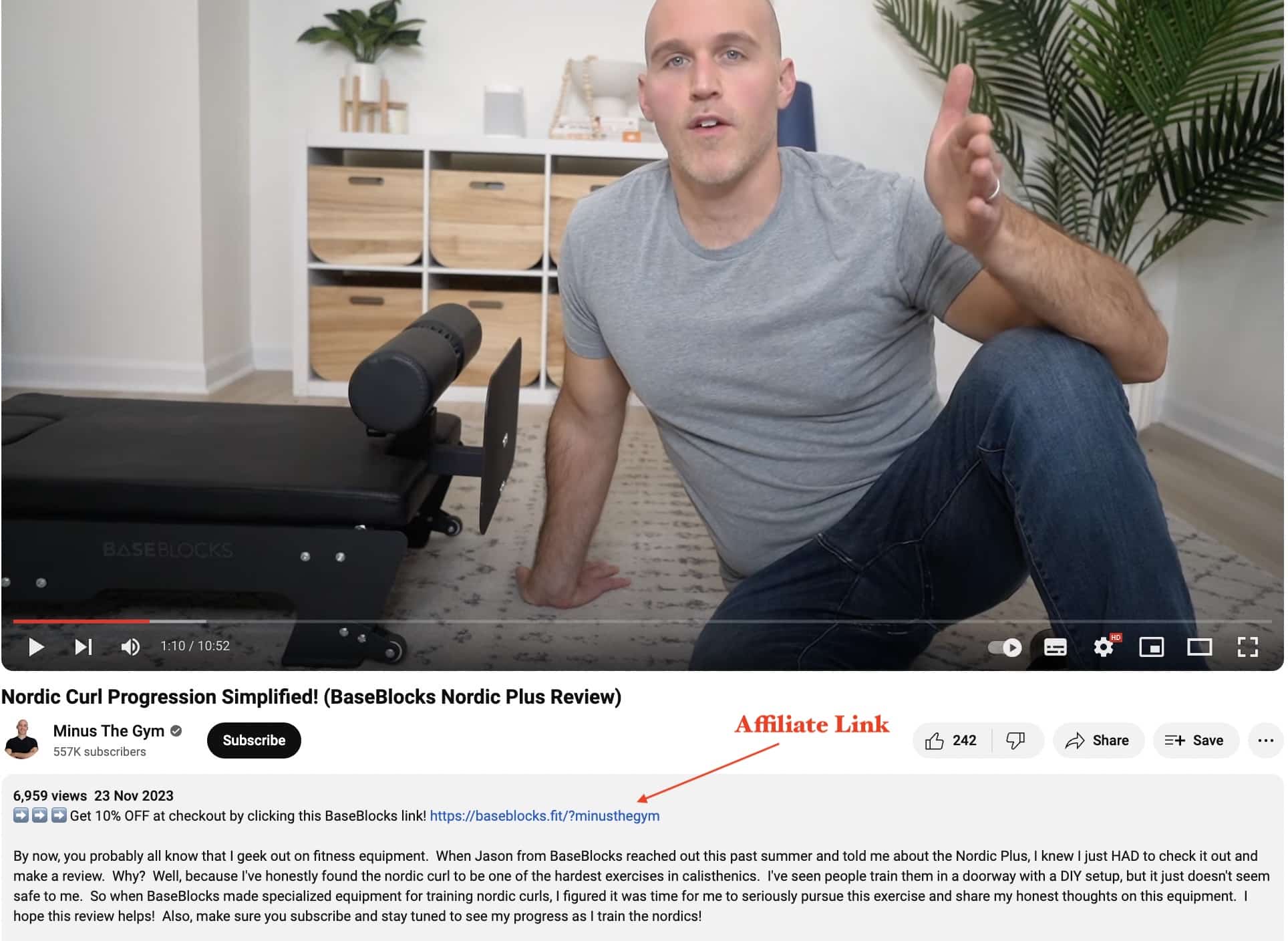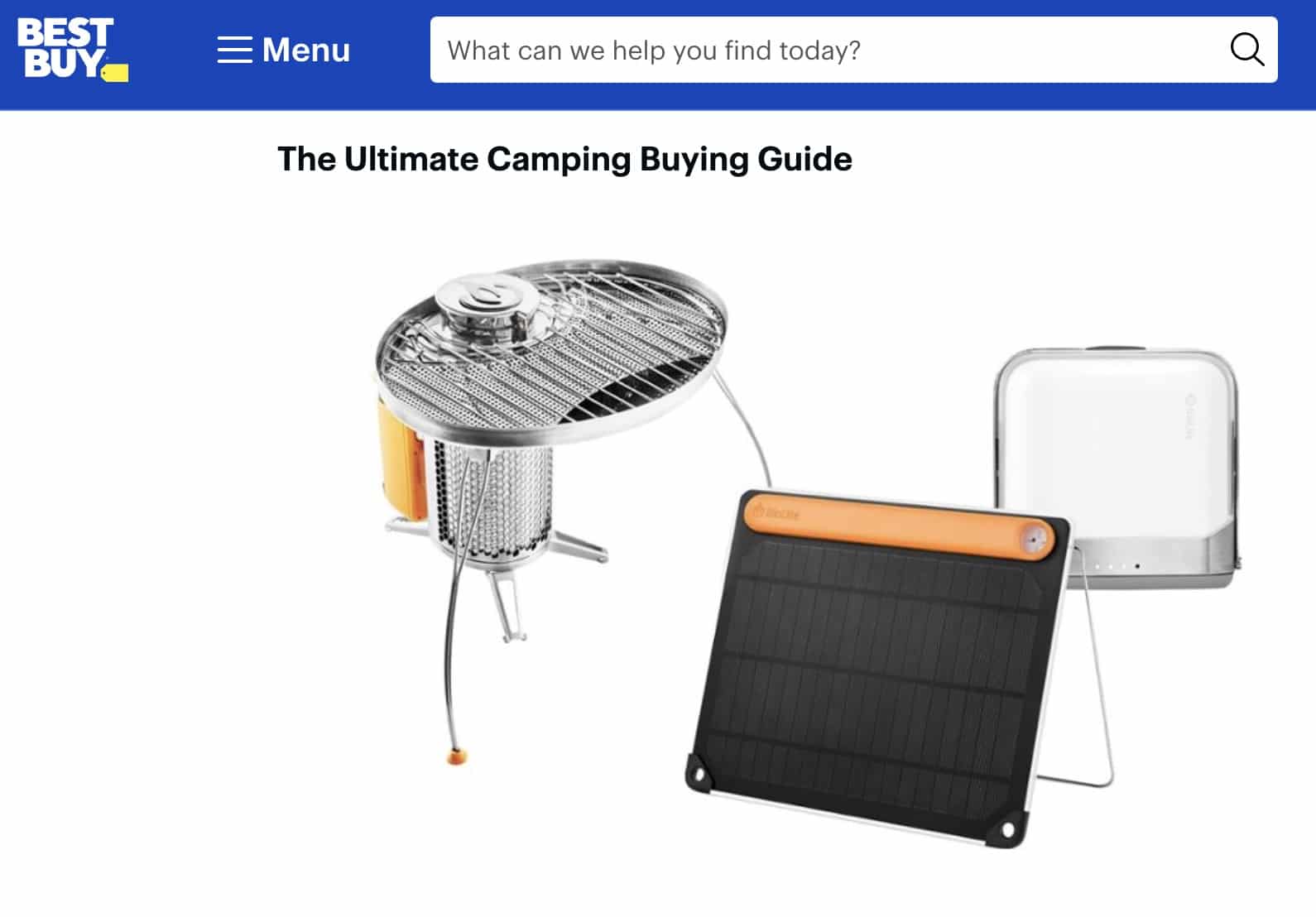Now is the perfect time for content publishers to boost their earnings through affiliate marketing.
In 2020, a report from Awin found that content and blogs make up more than 40% of affiliate marketing sales in the United States.
The potential to make money from content is expanding, with affiliate marketing spending expected to reach $8.2 billion in 2022. This marks a $2.8 billion increase in just five years.
However, not all affiliate content is equally effective for earning. To maximize your sales, you must strike a balance between evergreen commerce content that converts consistently throughout the year and seasonal or limited-time offers.
Interested in learning about successful affiliate marketing content and seeing examples of how top-performing affiliate websites drive conversions? Keep reading for ideas that work best.
Table of Contents
Popular Types of Content for Affiliate Marketing
1. Product Reviews
Getting into affiliate marketing is easy with product reviews.
Online reviews play a crucial role in helping people decide what to buy, and a staggering 97% of consumers check them before making a purchase.
When writing reviews, honesty is crucial. Instead of glossing over flaws, provide a balanced perspective. Take inspiration from well-rounded reviews like those on Consumer Reports, where they discuss both the strengths and weaknesses.
Including a section about where the product might fall short helps customers make informed decisions, increasing satisfaction and the likelihood of them returning for more reviews. This way, you earn commissions, and they become repeat customers.
2. Product Roundups
Product roundups can significantly boost your affiliate revenue by catering to diverse reader preferences. Instead of relying on a single link, you can guide different readers to various products.
You can highlight a recommended product stands out and increases conversions. For instance, in a beauty blog’s subscription box roundup, the top pick is labeled “Ultimate Choice,” making it easy for readers to decide.
Unlike product comparisons, roundups feature products that might not be directly comparable. When items vary significantly, a roundup makes more sense than a side-by-side comparison.
For example, on GamesRadar, a post comparing gaming headsets includes pros and cons for each, aiding readers in choosing the best one for their needs.

Base your roundup on a theme relevant to your audience, like skincare or tech gadgets. Use buyer intent keywords in your headline to attract users searching for specific products.
Here’re some headline ideas for your reference:
-
Top [number] best for [demographic]
- Example: Top 5 Smartwatches for Fitness Enthusiasts
-
The ultimate [specific product type] in [year]
- Example: The Ultimate Coffee Makers of 2022
-
[Number] to achieve your [goal]
- Example: 7 Supplements to Boost Your Immunity This Winter
-
[Number] to enhance your [activity]
- Example: 10 Stylish Backpacks for Your Next Adventure
3. Product Comparisons
Comparing products is a powerful strategy for trustworthy affiliate content. When you present similar products side by side, it gives buyers a clear understanding of each item’s strengths and weaknesses.
For affiliate marketers, a key tip is to simplify the differences by creating a checklist or criteria. If, for instance, you’re comparing cameras, your checklist could include specs like resolution, zoom capabilities, and video recording quality.
Not sure what criteria to include? Check the product pages on the manufacturer’s website or on platforms like Best Buy to identify important features.
Remember that many readers skim through reviews, so incorporating visual aids for a quick summary can be very effective.
In an example from TechRadar (see below), the criteria are neatly organized, making it easy to compare headphones. This approach helps readers make the final decision confidently.

Product comparisons are straightforward because your audience is usually near the end of their buying journey. They already know what they want, and your role is to assist them in the final evaluation.
4. Resource Pages
A resource page is like a helpful toolbox filled with your favorite tools and resources. It’s there to make life easier for your audience by putting all the important information in one spot, saving them from sifting through tons of text. But don’t just toss random links on there – give your resource page a theme, and make sure it helps your reader achieve a specific goal.
Consider Pat Flynn’s blog, Smart Passive Income. On his resource page, you won’t find a chaotic collection of links. Instead, it’s a roadmap for beginners aspiring to excel in online business. Pat’s page provides insights and tools for website building, podcasting, project management, and more.

Since a resource page isn’t the place for lengthy persuasion, knowing your audience and their needs is crucial. Understand who you’re talking to and what they’re after.
Remember, visitors to your resource page usually aren’t actively looking to buy something. While it’s fantastic for consolidating your links, keep in mind that the conversion rate might not be sky-high.
5. Email Marketing
Many publishers overlook the power of building an engaged email list, yet it remains the most effective way to secure repeat sales as an affiliate.
When employing email for affiliate marketing, you can design emails to convert directly or guide readers back to your existing content (such as articles or guides). However, whether you can include direct links in your emails depends on the policies of the affiliate network or advertisers you’re partnered with.
For instance, certain platforms like Amazon may not permit affiliate links in emails. In these situations, it’s advisable to include links to a blog or a dedicated landing page in your newsletter.
You can add a touch of creativity to monetize your newsletter with affiliate content:
- Incorporate relevant affiliate links into your Welcome Series.
- Feature a “Top Picks” section in your regular emails.
- Develop an engaging email course.
- Summarize your past product experiences and reviews.
- Shine a spotlight on a particularly valuable product.
Regardless of your chosen method, ensure your emails consistently provide value. If your content feels insincere or overly focused on sales, subscribers are more likely to unsubscribe or mark your emails as spam.
Learn more: Email Marketing Tips for Affiliates
6. Gift Guides
Whether it’s a holiday, birthday, wedding, or just a surprise gesture, finding the perfect gift can be a real puzzle. But worry not! Gift guides are here to rescue you from the overwhelming task of choosing.
These guides offer carefully curated suggestions that cater to specific needs, making the whole process a breeze for your audience and increasing the chances of them making a purchase.
Here’s how you can create an engaging gift guide:
-
Organize by Occasion, Relationship, and Budget: Make your gift guide easily accessible by categorizing it based on occasions, types of relationships, budget constraints, or any other relevant factors. For instance, create sections like “Gifts for Book Lovers,” “Perfect Picks for Siblings,” or “Budget-Friendly Finds.”
-
Choose a Specific Theme: A themed approach improves searchability and conversion rates. Target a specific buying intent, like “10 Tech Gadgets Under $50 for Gadget Geeks” instead of a generic list. Tailor your recommendations to match the occasion or recipient, creating a more personalized shopping experience.
Gift guides take the stress out of finding the ideal present. A gift guide usually includes essential information such as price, features, and ratings, pros and cons, etc. This can simplify a customer’s selection process, allowing them to quickly compare options and find the perfect gift without hassle.
This example targets adventure enthusiasts and anyone looking to buy a gift for someone who loves the great outdoors.

The author organizes recommendations into different categories, making it simple for diverse viewers to find the ideal gift. Don’t forget to share your personal favorites!
7. Tutorials
Explaining how to use a product builds trust with your audience. When people understand how a product works, they’re more likely to make a purchase. It’s crucial for your audience to feel confident in using what you’re promoting.
For instance, someone unfamiliar with a current body LED mask might find it intimidating, but after watching a YouTube tutorial, they realize it’s easy to use.

Tutorial affiliate content typically addresses a problem and demonstrates how a product, like a current body LED mask, can solve it. For example, “How to effectively use a current body LED mask for skincare.” The goal is clear: the recommended product helps achieve it.
8. Ebooks
Ebooks offer a chance for affiliate marketers to engage new audiences through comprehensive and captivating long-form content. Unlike regular blog posts, ebooks allow a deep dive into specific topics that cater to your audience’s needs.
A well-researched ebook establishes you as a reliable source in your niche. As you provide in-depth expert advice, you’ll build trust with your audience. This increases the likelihood of them purchasing affiliate products you recommend.
While blog posts bring short-term traffic, ebooks, especially when placed behind an opt-in form, continue to attract subscribers and traffic for months or even years.
You can use your ebook as a lead magnet by placing it behind an opt-in form. This establishes a direct communication channel with audiences interested in your niche.
However, some affiliate programs, like Amazon, may have restrictions on promoting links in non-public resources like ebooks. You should always review the terms and conditions of any affiliate program to avoid potential issues.
9. Videos
Videos are a top choice for content creators because they can deliver a lot of information in a short time. They come in various forms, like vlogs, tutorials, live streams, and even gifs.
While YouTube is the king of video platforms, other platforms are catching up fast. TikTok’s popularity explosion has pushed Instagram and Facebook to up their video game with features like Reels, IGTV, and Facebook Live.
Videos excel at building a direct connection between creators and their audience. This intimacy, coupled with the higher barrier to entry for video creation, means less competition and easier ranking for relevant keywords.
Take a look at the YouTube channel Minus The Gym. The owner Ryan Sadilek’s workout videos aren’t just exercises; they’re comprehensive guides to staying fit. He demonstrates proper form, offers motivational tips, and recommends equipment.
Moreover, he includes affiliate links in the video description, making it convenient for viewers to purchase the gear he recommends.
Learn more: How to Make High Quality YouTube videos

10. Affiliate Landing Pages
Landing pages are special standalone website pages designed to guide visitors through the final steps of your affiliate marketing funnel.
Unlike regular web pages, landing pages have a singular goal. They are desinged to optimize a specific Call To Action (CTA), making them highly focused on conversion. Traffic to a landing page typically comes from various sources such as social media, organic searches, or email newsletters.
Think of landing pages as the concluding phase of a targeted campaign. To set up an effective landing page, you need to warm up your audience and prepare them for conversion. Therefore, don’t use landing page as the first exposure to the affiliate offer; rather, it serves as the last push towards conversion. In other words, it’s recommended to develop a unique landing page for each campaign.
For example, let’s consider a popular fitness brand launching a new workout program. They can create a landing page as the last step in an Instagram ads funnel. The landing page can feature engaging content right away, identifying the target audience (“fitness enthusiasts looking for a transformative workout”) and highlighting the offer’s relevance (“effective, time-efficient workouts with proven results”).
In this case, to ensure that an Instagram ad aligns with the landing page, the seller has to target the same audience with visuals of people achieving fitness goals and emphasize the program’s success stories.
When someone clicks on the landing page link, they’re already captivated by what the workout program has to offer, thanks to their prior engagement with the ad.
11. Case studies
Imagine sharing stories about how your products make a difference in people’s lives – that’s what case studies do. These are stories of real people explaining why they love a product or service, and how it solved a problem for them.
People like case studies because they talk about real-life problems and how your product helps solve them. It’s relatable – your audience can see themselves in the story and understand why your product is important.
Case studies also prove that it’s not just you saying your product is great. When others share their positive experiences, it adds a powerful layer of social proof. Real examples and reactions make your case studies effective, helping your audience get to know, like, and trust you.
For example, in the following blog post, you can see that the beauty magazine Stylist actually invited three women to test the effectiveness of LED masks and share their before-and-after results.

12. Social Media Posts
In today’s world, it’s a bit unusual if someone isn’t on social media. With over 3 billion users worldwide, it’s an awesome way to connect with more people than ever.
Social media posts are things you share online – like text, photos, videos, or infographics. They’re handy for guiding folks to check out something you recommend or sharing helpful info as you gain trust. Remember, what works on Instagram might not be as effective on LinkedIn, even though both can get people to visit your website.
Using social media is a simple way to talk with your audience, but being consistent is key. Regular, genuine interaction helps build trust. When you connect with your audience, they start looking to you for info and advice because they feel a personal connection.
Take “Linus Tech Tips,” for example. He uses his posts to get people interested in his affiliate offers. By sharing just enough info, his audience is curious enough to click the link and learn more.

13. Buyer’s Guides
Buyer’s guides are like roadmaps that help people make smart buying choices. They focus on specific needs, such as “essential camping gear for beginners.”
Buyer’s guides are effective because they simplify the decision-making process. They guide your audience through each step, making it a breeze to pick exactly what they need.
Take, for instance, a camping gear guide from Best Buy. It’s a complete resource that helps buyers choose the best camping gear. The guide explains what to look for and recommends top options at each stage. An included FAQ section ensures all questions are covered.

14. Deals and Coupons
If you’re into affiliate marketing, you’ve got powerful allies in deals and coupons. In 2022, digital coupon use is set to soar past $90 billion. But what exactly are they?
Think of them as visual “vouchers” that let your audience snag a sweet deal when they use your affiliate offer. It could be a discount, a freebie, or getting more items for the same price. These digital goodies come in the form of banners on your site, pop-ups, or any eye-catching visuals that shout out the offer.
The best part? It’s easy to see their success. Saving someone money speaks volumes about what you’re offering. Plus, here’s a tip: people often hunt for coupons or deals when they’re about to hit that “buy now” button. Offering a discount at this crucial moment makes them more likely to pick you over others. It’s like giving them that extra nudge when they’re on the fence about making a purchase.
15. Social Media Posts
In today’s world, it’s a bit unusual if someone isn’t on social media. With over 3 billion users worldwide, it’s an awesome way to connect with more people than ever.
Social media posts are things you share online – like text, photos, videos, or infographics. They’re handy for guiding folks to check out something you recommend or sharing helpful info as you gain trust. Remember, what works on Instagram might not be as effective on LinkedIn, even though both can get people to visit your website.
Using social media is a simple way to talk with your audience, but being consistent is key. Regular, genuine interaction helps build trust. When you connect with your audience, they start looking to you for info and advice because they feel a personal connection.
Consider “David Yarrow Photography.” He uses his Facebook posts to get people interested in his photography blog. By sharing just enough info, his audience is curious enough to click the link and learn more.

How to Create Affiliate Marketing Content That Sells
If you want to create affiliate marketing content that effectively sells, you must pay attention to detail and strategic planning. Here are some strategies we have tried:
-
Optimize with Focus Keywords: Choose long-tail, specific keywords for your content to increase your chances of ranking higher in search engine results. Avoid popular, generic keywords with intense competition. For instance, instead of targeting “multivitamin,” aim for phrases like “vitamin supplement for a patient with diabetes” to attract more targeted traffic.
-
Select the Right Content Type: Different types of content appeal to various audiences. Consider using reviews, tutorials, or product roundups based on your industry, niche, and audience preferences. Analyze your competitors’ strategies and track the performance of your own content to determine the most effective approach.
-
Structure Your Content Effectively: Break your content into digestible sections with clear headings, bullet points, and visuals to improve readability. Include a summary or score box to provide a quick overview of key points. For longer reviews or roundups, organize the content logically, starting with an introduction, followed by product details, pros and cons, and a compelling conclusion with a call to action.
-
Comply with Affiliate Program Terms: Familiarize yourself with the terms and conditions of affiliate programs to ensure compliance. Pay attention to guidelines regarding product mentions, affiliate disclaimers, image usage, and promotional methods. Violating these terms could result in penalties or suspension from the program.
Final Words
Affiliate marketing is a great way to attract the right people to a product or service. However, just slapping an affiliate link on a vague article won’t get you far in this crowded space.
To make content that connects with your audience and gets them to click the CTA button, focus on powerful keywords, use the right content type, structure it for your audience, and stick to affiliate program terms.
When creating affiliate marketing content, pick a niche you love, understand your audience, and produce valuable blog posts, videos, or social media content that genuinely helps promote affiliate products. Always be transparent about affiliations and prioritize providing value to your audience.
If you need more guidance, sign up for my online business coaching.

Jeff Smith, Founder of High Income Source, is an online business coach with a BBA in Marketing and Entrepreneurship from the University of Pennsylvania. His online business coaching program is so popular that more than 100 students have benefited and started successful online businesses under his guidance.
Jeff started dabbling in online business while he was in college, where he began with dropshipping. After college, Jeff worked at a marketing agency and freelanced as a writer. His breakthrough came when he realized the potential of blogging, leading to a $100,000 sale of a dog-focused website. His expertise includes SEO, affiliate marketing, Amazon FBA, blogging and dropshipping.